Showing 21–30 of 68 results
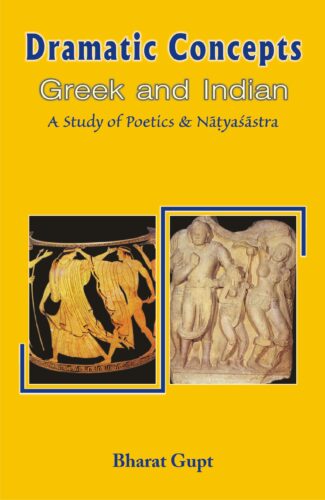
This study offers a fresh approach in comparing ancient Greek and Indian dramatic theories by reconstructing Greek/Indian performances to highlight their similarities and differences. This revaluation will help in shaping of newer modes of performance.
This study offers a fresh approach in comparing ancient Greek and Indian dramatic theories. Instead of treating the Poetics and the Natyashastra as Western and Eastern viewpoints, it places them within the broad framework of ancient Indo-European culture and the art of sacred drama (hieropraxis). It demonstrates that hieropraxis was basically different from post-Renaissance European drama which was entirely secular in content and Realistic in presentation. The Poetics and the Natyashastra on the contrary, belonged to theatres which pleased both gods and men, and which used semiotised gesture, dance, music, and dialogue to create a highly ornate theatrical reality. The book aims at comparing not only the concepts as propounded by Aristotle and Bharata Muni, but also attempts to reconstruct the Greek and Indian performances to highlight their similarities and differences. In view of the increasing constrains imposed on artistic endeavours by commercial pre-occupations in todays world, this stimulating revaluation of the two major classical stage-crafts will go a long way in the discerning and shaping of newer modes of performance. Concepts like anukarana, dharmi, abhinaya, itivritta, mimesis, muthos, melopoiia, katharsis and rasa, etc., as revisited and expounded here, can be seen as means of creating dramatic shows which go beyond message and entertainment to provide sublimer experiences.
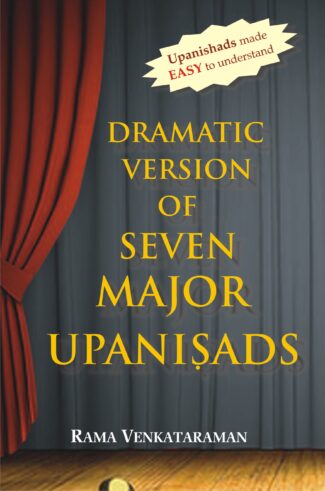
This book an English translation of the Tamil text expounds the wisdom contained in seven of the principal Upanishads in the style of short dramas. English transliteration and meanings of the Sanskrit verses are also included. The language is simple to follow which makes the Upanishads easily understandable by even a layman.
The Upanishads reveal the nature of true vidya: it is the knowledge which leads to the understanding of Brahman which alone is the Reality in the world of appearances. The dramas by Shri Mani Iyer based on the Upanishads render the meaning of the Upanishads in an interesting and captivating manner so that a wider audience can gain from the Upanishadic insight.
This book presents an English translation of Mani Iyers seven Upanishadic dramas, originally in Tamil, and includes English transliteration of the original Sanskrit verses. The dramas pertain to seven of the major Upanishads: Kena, Ishavasya, Prashna, Mundaka, Mandukya, Taittiriya and Katha. With reference to each drama, there is an introduction that reveals the major questions raised by the Upanishad, the manner in which the play proceeds, the nature of the story, its characters, and the conclusion of the play. The translation is simple to follow and possesses a rare clarity.
Because of the simple language and the clear meanings of the Upanishadic verses, this book will be valuable to readers in general, students in particular, and to those interested in knowing what our Upanishads contain and intend to convey.
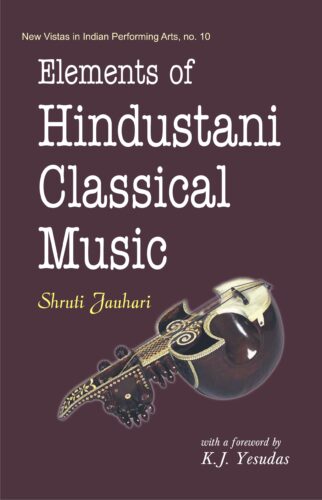
The book describes the history and evolution of Hindustani classical music, and terms and processes related with its performance. The musical instruments used in vocal singing, rags frequently presented in classical musical concerts, and famous gharana musicians have also been discussed. Very useful for the beginners of Hindustani Music.
Hindustani classical music, a jewel in the crown of the Indian musical tradition, has become increasingly popular in South India and abroad over the last few decades. This book attempts to present a detailed and comprehensive discussion of the fundamental concepts and aspects of Hindustani classical music. It begins with an account of the history and evolution of Hindustani classical music by taking up developments in a chronological order. It explains a number of terms and processes involved in the performance of Hindustani classical vocal music. In an interesting discussion, it mentions the various famous gharanas of the genre and deals with the life-histories of some of their eminent musicologists and singers. The musical instruments which are used in accompaniment to the vocal singing in Hindustani music are described. It also details the rags which are frequently presented in contemporary musical concerts, highlighting the important features of each.
The book will be useful to all those who wish to learn and acquire knowledge of Hindustani classical music. It will be of interest to all practitioners of Hindustani classical music.

The folk songs in this collection are given in vernacular Hindi language, transliterated and translated, to reach readers with different backgrounds. These songs tell the story and customs of celebrating life-cycle ceremonies, welcoming seasons, and related mythology.
Blowing of a conch-shell and/or ringing of a hand bell and/or singing a song to welcome the evening twilight in front of a tulsi plant is a nostalgic scene from Indias past. For the majority of the young Indian population, this daily routine is only depicted on picture postcards or in Bollywood movies. Folk songs in this book were recorded in the 1970s. Since Independence, India has been undergoing fast technological advances; a wave of new internationalism is absentmindedly sweeping away rural traditions. Singing and playing of traditional folk songs and ensembles for appropriate ceremonies are becoming less and less popular; instead, movie songs and modern brass bands are appreciated. Each folk song in this collection is like an artefact in an archaeological museum. These songs tell the story and customs of celebrating life-cycle ceremonies, welcoming seasons, and retelling our mythology. The songs are given in vernacular Hindi language, transliterated, and translated, to facilitate understanding by readers with different backgrounds. The original field recordings have been deposited at the Archives and Research Center for Ethnomusicology of the American Institute of Indian Studies at Gurgaon, Haryana, India, where they are available for listening and recording details.
Gita Govinda, a drsya-kavya of Jayadeva, a twelfth-century Sanskrit poet, due to its deep foundations in devotion and exquisite intrinsic beauty, is the most desired in the music and dance of India. This erotic poem, through its three characters in Radha, Krsna and the sakhi, portrays physical love as a metaphor for divine longing of the individual soul to have its union with the Supreme.
The volume in hand presents the primacy of the language in linguistic and literary theories as the vehicle of thought, along with the performing arts background and technical aspects of dance that complement Jayadeva’s composition. It also deals with a setting for the Gita Govinda in terms of its historical context, time, cultural influences and relevance in the arts.
It addresses each and every verse of Gita Govinda with translation and literary notes. Also, it showcases the uninterrupted text in Devanagari along with Romanized transliteration. In a nutshell, the book brings to us a magical world of dance and music through the eyes of a Sanskrit scholar and a mature, expressive dancer in Sharda Narayanan and Sujatha Mohan, respectively.

It is a wide-ranging survey of the north Indian tradition of classical music during the post-Independence period. The book is divided into six parts, which, based on the authors vast experiences, make complex musicological concepts accessible to non-academic readers.
Hindustani Music: A tradition in transition is a wide-ranging survey of the North Indian tradition of classical music during the post-independence period. Explicitly, this book addresses music lovers of above-average familiarity with Hindustani music, and their curiosity about its inner workings. It is, however, also a valuable reference for scholars and other writers on music. The book is based on the author’s long years of training as a musician, vast experience as an analyst of music, and an observer of the cultural environment. The book is divided into six parts. Part I articulates an Indian perspective on important societal, cultural, economic and technological drivers of Hindustani music. Part II discusses issues pertaining to presentation formats, and the structural and melodic aspects of Hindustani music. Part III deals with the notion of raga-ness, and the world of ragas. Part IV presents comprehensive backgrounders on the four major genres of vocal music Dhrupad, Khayal, Thumree, and Tappa. Part V features detailed fact-sheets on eight major melodic instruments of the Hindustani tradition Rudra Veena, Sitar, Surbahar, Sarod, Sarangi, Shehnai, Santoor, and the Indian classical (Hawaiian) guitar. Part VI presents a glossary of words in italics, a list of suggested readings, and an index. The book makes complex musicological concepts accessible to non-academic readers, and contributes significantly to widening the understanding of contemporary trends in Hindustani music. Written by an author of impeccable credentials as a musician, researcher, and author, this book is a very significant addition to the body of authoritative writing on 20th century Hindustani music.
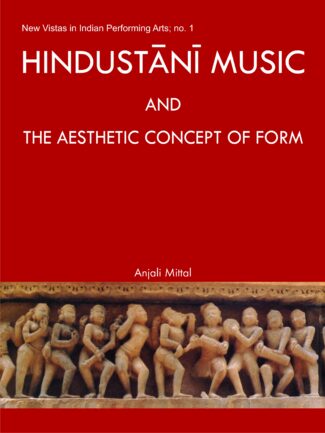
It studies the concept of form in the context of art, specifically Hindustani music. It investigates the underlying philosophical aesthetics and some aesthetical concepts and analyses the basic forms of raga and tala.
With its roots in the Samaveda (which treats it as a divine art), music in India has a long, splendid tradition. Over the centuries, it has absorbed fresh influences and experimented with new forms to finally evolve into two meticulously codified classical systems: Hindustani and Carnatic. In todays growing library of writings on Hindustani music, Anjali Mittals research is yet another valuable addition adopting, as it does, a viewpoint which has been neglected so far, namely, the viewpoint of contemporary western aesthetics. It is for the first time that this monograph examines the concept of form in Hindustani classical music. In this context, analytic attention has been focussed on some select compositions in dhruvapada, dhamar, tarana, vilambit and drut khyal genres of Hindustani classical vocal music. A wide variety of drut tanas has also been analysed in terms of notation and linear diagrams. Such diagrams, in fact, distinguish the present volume. Analysis of some rhythm-cycles and rhythmic patterns is another feature of this book. Thoroughly documented and written in a jargon-free language, the study includes a contextual discussion of aesthetics, artistic expression, aesthetic predicates and, above all, the concept of artistic form. The work may be expected to interest all those who want an analytic understanding of what form (or bandisha) means in the region of Hindustani classical vocal music.
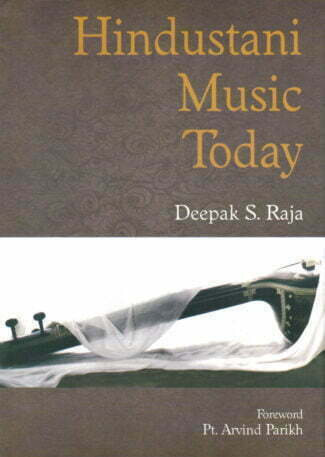
A panoramic view of Hindustani art music, for educated readers with some familiarity in it, with an informed perspective covering major genres of this musical stream, instruments in vogue, with a brief history, by an acclaimed author and musician.
Stating that Hindustani music should be rightly termed Art music and not classical music, the book begins by discussing the features of Art music and presents an approach to appreciating Hindustani music. It provides a detailed understanding of the components of the raga experience in Hindustani music, including their time theory and the role of Gharanas of the musical tradition.
It deals with genres of raga-based vocal music which have been performed over the last five centuries: Dhrupad, which has its moorings in devotional music; Khayal vocalism shaped by Sufi influences; the thumree, which originated as an accompaniment to the Kathak dance; and the tappa, adapted from the songs of camel drivers in the north-west frontier. It takes up the use of instruments in Hindustani music, especially the Rudra Veena, Sitar, Surbahar, Sarod, Santoor, the Shehnai, Pakhawaj, the Hawaiian Guitar and many others, giving an account of their origin, performing styles and lineages relating to them.
Throughout, the emphasis is on contemporary trends in Hindustani music and its prospects in the future. It mentions the significant practitioners of Hindustani music, both vocal and instrumental.
The volume will interest lovers of Indian music and also scholars who want to have a greater understanding of its traditions, its contemporary appeal and trends in practice.
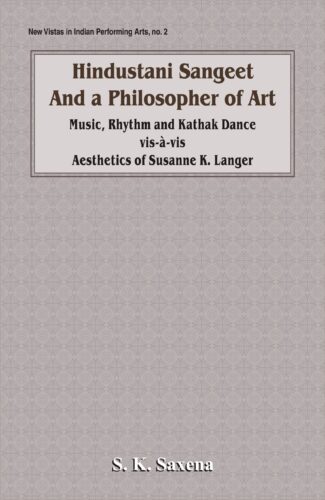
The book seeks to weigh some basic facts and concepts of Hindustani Sangeet (music, rhythm and Kathak dance) against the art theories of Susanne K. Langer, an eminent aesthetician of the recent past, incorporating numerous illustrative references to Hindustani sangeet.
The book is decidedly the very first of its kind. It seeks to weigh some basic facts and concepts of Hindustani sangeet (music, rhythm, and Kathak dance) against the art theories of Susanne K. Langer, an eminent aesthetician of the recent past; but nowhere without meticulous attention to the text of her writings. The expression theory of art has for long dominated the history of aesthetics. At the hands of Langer, however, the theory takes a new turn. She conceives of art not as a direct self-expression of the artist’s immediate affective state, but as a symbolic expression of his knowledge of what she terms variously as felt life, sentience, or forms of feeling. Drawing freely upon examples from the region of Hindustani sangeet, the present book accepts Langer’s protest against the popular view of artistic expression, but contends that there is a good deal in our music and dance which has nothing to do with feeling, and is admired simply because of its sweetness, clarity, shapeliness, and accordance with grammatical norms. In the chapter on music, while discussing Langer’s emphasis on commanding form in a total performance, the author proposes a quite new definition of raga which seeks to integrate the various points in its traditional characterizations. The third chapter too, which deals with Langer’s view of rhythm, is not merely explanatory, but ventures to propose a fresh and fairly defensible definition of rhythm. The closing chapter, devoted to dance, not only essays to meet some key objections to Langer’s writing on this art, but clarifies some atypical language that she uses in this context: apparition of vital powers; the dynamic image; virtual realities; and the created, superhuman dance-personality. But perhaps the two most striking features of the book are: first, a lucid exposition of the essentials of Langer’s aesthetics in the opening chapter; and, second, abounding illustrative references to Hindustani sangeet.

This book looks at Hindustani Sangeet that is, music, rhythm, and (Kathak) dance explicitly in relation to philosophy and philosophers of art. The other key features of this volume are a quite original (aesthetic) way of reflecting on Kathak dance, and a painstaking discussion of how exactly our music may be said to be spiritual.
There are three major ways of looking at Hindustani sangeet. An easy-to-follow discussion of its basic concepts is one. A truthful and sympathetic, yet not merely laudatory, account of the life and art of some of its masterly exponents is another. Both these approaches have been fairly common so far. The third way, which has not yet received the attention it deserves, tries to dwell upon Hindustani music, rhythm, and (Kathak) dance explicitly in relation to philosophy and philosophers of art. It is from this point of view that the present book should be welcome. It does not, however, overlook the first two approaches. Besides quite a few essays that explore the aesthetical aspects of Hindustani music, the book takes a renovative look at Kathak dance, and engages the reader in a discussion of how far our music can be regarded as spiritual. These and some other key features should make this book acceptable to both rasikas and musicologists.